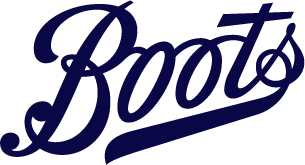Find out why it's important to get your child's eyes tested regularly
How early can my baby's eyes be tested?
Your baby will have their first eye check within 72 hours of birth as part of their newborn physical examination. This is usually done at hospital soon after delivery, but can occasionally be carried out at your GP's surgery or at home.
Further eye checks can be made:
• Between six and eight weeks old as part of a follow-up physical examination
• Between one to two years old, as part of your child's health and development review by your health visitor
• Between four to five years old, before they start school – this should be with an optician
It’s recommended that children have their eyes tested at least every two years, or as directed by your optometrist. Eye tests are free for all children under 16 years old and those under 19 years old who are in full-time education
What do the tests involve?
To test a baby's eyes, an ophthalmoscope (a special torch) is used to shine a light into their eyes to check their appearance and response. Their attention to visual objects is also tested by seeing if they can focus on an object and follow it with their eyes.
What could the eye exam reveal?
There are a number of different eye problems that can affect babies and children.
These include:
• Childhood cataracts: Cloudy patches in the lens of the eye that are present from birth
• Lazy eye (amblyopia): The vision in one eye does not develop properly
• Squint (strabismus): The eyes look in different directions
• Short sightedness (myopia): Distant objects appear blurred, while close objects can be seen clearly
• Long-sightedness (hyperopia): Distant objects can be seen clearly but nearby objects are out of focus
• Astigmatism: The transparent layer at the front of the eye (cornea) is not perfectly curved
What about when they get older?
Eye tests for older children are carried out at an opticians and include:
• Snellen and LogMAR charts: These contain rows of letters and numbers (or for younger children, pictures or symbols) of decreasing sizes. Your child will be asked to read out or match the letters they can see from a specific distance
• Range of movement: Your child will be asked to look at a certain object that is then moved to eight different positions. This tests how well the eye muscles work
• Refraction test: These help identify any sight problems and determine what type of corrective lenses could help them overcome any vision difficulties. Older children will be asked to look at a light or read letters from a chart while different lenses are placed in front of their eyes
• Stereopsis: This checks that your child's eyes are working together, and they can see things in three dimensions
What information is given in a prescription?
The results of the refraction tests are shown as a series of letters and numbers on a prescription. This contains all the information needed to prepare the correct glasses for your child. The letters refer to the nature of the problem and the number refers to the strength of the corrective lens required. Book an eye test for your child here.
If you have any concerns about the results of your child's eye test, always speak to your GP or optician for advice.



